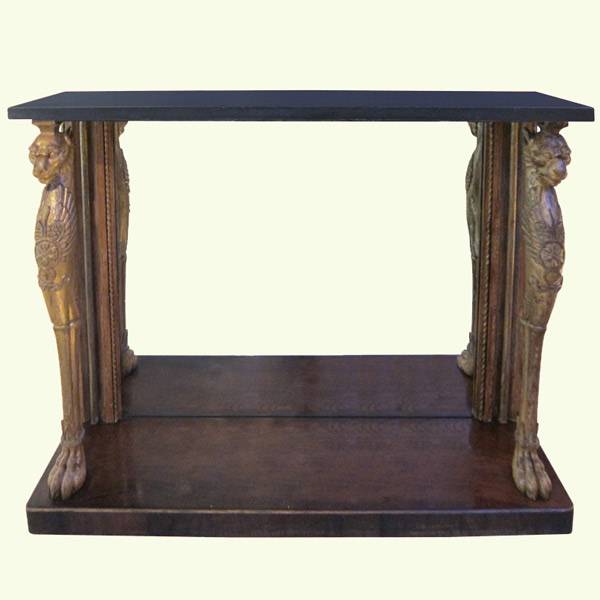Knowledge Center
French Furniture Styles
Directoire, 1789-1804
This fifteen year period was the most troubled in French history. Everything associated with the old regime - royal luxury, aristocratic power and privilege- was condemned. The revolutionaries of this time suppressed the furniture guilds, which could no longer guarantee the level of craftsmanship. On the other hand, the growing number of personal fortunes led to an increase in demand. However, the limited sophistication of the new clients made them less than exacting: they were often satisfied with surface glitter and placed a high priority on rapid execution. Only after Bonaparte's seizure of power would France again cultivate a grand style.

Furniture: The troubled economic situation had a direct impact on contemporary furniture production. Elegant and gracious, imbued with antique references, Directoire furniture heralds the Empire style but is less ponderous and sumptuous. Seating was the only are of furniture production characterized by invention in this period. Chairs, daybeds and settees were light, elegant and slender without being fragile.
Materials and techniques: Most furniture from the period was solid wood: elm, walnut, fruitwood, or beech. Only luxury work was made of solid and carved mahogony. Painted pieces, usually made of beech, were common (gray, white, sea green, lime green). There was a revival of inlay decoration, using ebony, citronnier, copper and brass. Marquetry was almost totally absent due to economic restraints. Bronze fittings became rare.
Ornament: Ornamentation was spare and light, inspired by Greek and Pompeian models, and would never obscure a pieces basic structure. Squares and rectangles were pervasive and palmettes were common. Antique motifs such as tureens, urns, swans and winged lions were used repeatedly. Sphinxes, scarabs and pyramids were used.
Source: French Furniture by Sylvie Chadenet